What's New
Displaying results 2491 - 2500 of 4052
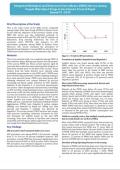
Resource | Fact Sheets,
This is the sixth round of the IBBS survey conducted among People Who Inject Drugs (PWID) in Eastern Terai. In line with the objectives of the previous rounds of the IBBS, this survey was also undertaken primarily to determine trends of HIV and STIs, HIV and STI related risk behaviours, drug injecting behaviours, the level of awareness about HIV/STIs and exposure to HIV intervention programs among PWID in Eastern Terai. Moreover, this survey examined the prevalence of Hepatitis B and Hepatitis C among PWID for the first time. Fieldwork for data collection was conducted in July 2015.
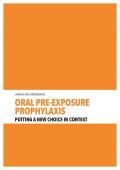
Resource | Publications,
Oral PrEP is an additional HIV prevention option for individuals at substantial risk of HIV exposure that will be effective as part of a comprehensive response to HIV.
The World Health Organization (WHO) anticipates releasing updated guidance on oral pre-exposure prophylaxis (PrEP), containing tenofovir (TDF), as an additional HIV prevention choice. The new guidance is likely to be significantly broader than previously and creates real opportunities to move forward with implementing PrEP as part of comprehensive HIV programmes. This publication, produced collaboratively between UNAIDS, WHO and AVAC, is intended to complement WHO recommendations and support the optimal use of oral PrEP to protect individuals and contribute to ending the AIDS epidemic.
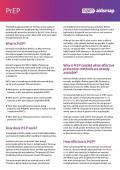
Resource | Publications,
This briefing paper provides an overview of pre-exposure prophylaxis (PrEP) for people planning, commissioning or providing HIV prevention activities in the UK. It does this by reviewing thirty key questions about PrEP and how it might be implemented in the UK.
PrEP is an HIV prevention strategy that uses antiretroviral drugs to protect HIV-negative people from HIV infection. People take antiretrovirals (ARVs) when they are at risk of exposure to HIV, in order to lower their risk of infection. Research suggests that PrEP is highly efficacious in preventing the sexual transmission of HIV, as long as the drugs are taken regularly, as directed. However, PrEP does not prevent other sexually transmitted infections or pregnancy.
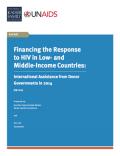
Resource | Publications,
As world leaders meet to discuss the future of financing for development1, this report from the Joint United Nations Programme on HIV/AIDS (UNAIDS) and the Kaiser Family Foundation finds that funding to address HIV in low- and middle-income countries from nine of fourteen donor governments assessed either declined or remained flat in 2014; funding from five governments increased. Donor government funding for HIV overall grew by less than 2 percent, totaling US$8.64 billion in 2014. After adjusting for inflation and exchange rate changes, the increase was marginal (1%). Still, this was its highest level to date. Most of the increase in HIV funding in 2014 can be attributed to the United Kingdom, without which overall disbursements would have dropped. In addition, contributions to Global Fund to Fight AIDS, Tuberculosis and Malaria (the Global Fund), an increasing channel of HIV support for some donors over time, went up overall, while bilateral funding went down. Funding from the United States, the largest donor to HIV in the world, was essentially flat.
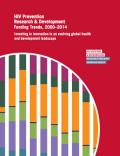
Resource | Publications,
In its eleventh annual report, the HIV Vaccines and Microbicides Resource Tracking Working Group (the “Working Group”) documents biomedical HIV prevention research and development (R and D) spending for the calendar year 2014, as well as reports on an analysis of investment trends spanning fourteen years. The Working Group generates estimates of R and D investment that can be compared year to year across options and strategies and funding sources, helping assess the impact of public policies aimed at accelerating scientific progress and to provide facts for advocacy. This effort provides transparency for funders, policy makers and HIV/AIDS advocates so they can better understand and track investment flows.

Resource | Presentations,
Prequalification Team - Diagnostics
Essential Medicines and Health Products
8th IAS Conference on HIV Pathogenesis
19-22 July 2015, Vancouver

Resource | Presentations,
Testing, new directions in treatment, and measuring impact: New WHO guidelines
(SUSA06) WHO IAS Satellite
Sunday 19 July 2015 12:30-14:30, room 211-214

Resource | Presentations,
19 July 2015 WHO Satellite Vancouver – IAS 2015
Eighth International AIDS Society Conference on HIV Pathogenesis, Treatment and Prevention (IAS 2015), Vancouver, Canada

Resource | Presentations,
Eighth International AIDS Society Conference on HIV Pathogenesis, Treatment and Prevention (IAS 2015)
Vancouver, Canada, Sunday 19 July 2015






